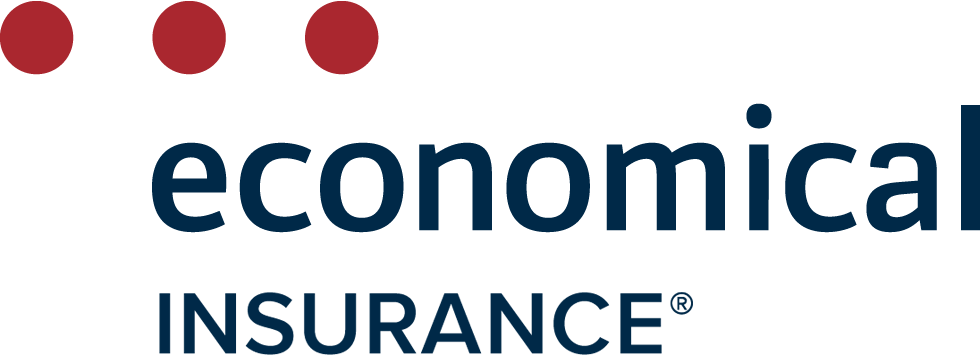
Get the Cheapest Third-Party Liability Car Insurance in Canada
Find your cheapest car insurance quote by comparing quotes from 50+ providers in a single search
How to get the cheapest car insurance quotes
Compare multiple auto insurance quotes in the time it takes to get just one.
Enter Postal Code
Enter your postal code to begin!

Enter Driver Details
Tell us a little bit about your vehicle, driving & car insurance history.

Compare Your Quotes
Compare your car insurance quotes from more than 50 top insurance companies.

Pick Your Policy
Pick the insurance policy that's right for you to connect directly with the insurance professional of your choice.
We've got hundreds of 5 star reviews
2,247 reviews on TrustPilot. See some of the reviews here.
Fran
Curtis
Robert Clarkson
Vincenzina Perri
Keith
Dev
Georgia
Shirley Munro
Hoang Tran
Alnoor
Michael Benninger
Gene
D on
Robert
Remonia Thompson
Rich
Luis
What is third-party liability car insurance?
Third-party liability car insurance is part of basic coverage in Canada that protects drivers from costs that result from an at-fault collision. Third-party liability coverage pays for:
- Your legal fees (if you're sued)
- The medical expenses of a person you've injured with your car (be it another driver, cyclist, or pedestrian)
- Damage you've caused to another person's property.
This third-party liability portion of your insurance policy won't cover your expenses related to injuries or vehicle damage that you suffer. Instead, these are covered by the accident benefits portion of your policy, Direct Compensation Property Damage, or any optional coverage you've added, such as collision insurance.
Is third-party liability coverage mandatory?
Yes, each province and territory have a minimum requirement for third-party coverage. Sometimes, a third party demands compensation for medical costs and property damage. Suppose the insurance adjuster finds that the amount they're asking for meets or exceeds your policy's limit. In that case, your insurance company will cap the amount of the award that goes toward property damage. To see what the caps are in your province, refer to the property damage limit column.
These are the required minimums:
| Province or territory | Minimum third-party coverage | Limit on compensation for property damage |
|---|---|---|
| Newfoundland and Labrador | $200,000 | $20,000 |
| Nova Scotia | $500,000 | N/A |
| New Brunswick | $200,000 | $20,000 |
| Prince Edward Island | $200,000 | $10,000 |
| Quebec | $50,000 | N/A |
| Ontario | $200,000 | $10,000 |
| Manitoba | $200,000 | $20,000 |
| Saskatchewan | $200,000 | $10,000 |
| Alberta | $200,000 | $10,000 |
| British Columbia | $200,000 | $20,000 |
| Yukon | $200,000 | $10,000 |
| Northwest Territories | $200,000 | $10,000 |
| Nunavut | $200,000 | $10,000 |
Because costs related to lawsuits can go beyond provincial minimum limits, it’s commonly advised to have a minimum of $1 million on your policy. Drivers may wish to buy additional third-party liability car insurance — for example, $2 million or $5 million. Find your cheapest third-party car insurance quotes by comparing results from 30+ providers in a single search!
When choosing the amount of coverage to buy it’s worth considering factors like how frequently you drive and if you live in a high-population area with increased potential for accidents. For instance, someone who drives frequently on busy highways may want to consider third-party liability coverage beyond provincial or territorial minimums.
The following guide can help you determine if third-party car insurance meets your needs or not. In addition to third-party coverage you may need other optional endorsements to get the protection you feel is necessary.
| Desired protection | Does third-party liability coverage include this? |
|---|---|
| Repair or replacement to another driver’s vehicle when you are at-fault | Yes. |
| Repair or replacement to another’s property in an accident when you are at-fault | Yes, including damage to fences and buildings. |
| Medical and rehabilitation costs for someone you’ve injured | Yes, it covers another driver or someone injured like a cyclist or pedestrian. |
| Legal fees and damages awarded to injured parties who sue | Yes, up to the limit you select for your policy. |
| Falling objects, natural disasters (like floods, fire, hail or lightning), theft or vandalism | No, this is covered by a separate, optional add-on known as comprehensive coverage. (It’s also available on its own as part of Specified Perils coverage.) |
| Repair or replacement costs for a driver's vehicle following a collision with an object, property or another vehicle | No, this is covered in collision (or upset) coverage. |
| Transportation replacement in case your vehicle suffers loss or damage for a peril you are covered for. (e.g.: A rental car or taxicabs) | No, requires optional coverage like Ontario’s OPCF 20: Coverage for Transportation Replacement or Alberta’s SEF 20: Loss of Use Endorsement. |
| Medical expenses or loss of income after an accident | No, this is covered in accident benefits insurance, which is mandatory coverage in all provinces except Newfoundland and Labrador. |
| Protection against loss if your vehicle is taken by someone living in your home | No, this is covered in All Perils coverage which covers damage by an additional driver or household member, as well as damage or loss if your vehicle is stolen. |
| Coverage for you or an eligible family member in case of injury or death in a not at fault automobile accident with a driver who carries no insurance or is underinsured | No, requires optional coverage like Ontario’s OPCF 44R: Family Protection Coverage or Alberta’s SEF 44: Family Protection Endorsement. |
| Damage to an automobile you operate but don't own, like one which is borrowed or rented | No, requires optional coverage like Ontario’s OPCF 27: Liability for Damage to Non-Owned Automobile(s) or Alberta’s SEF 27: Legal Liability for Damage to Non-Owned Automobile Endorsement. |
What's the process of filing a third-party liability claim after an accident?
Getting in an accident where someone is badly injured is every driver's worst fear, but with third-party liability, you're protected —at least for a minimum amount.
Third-party claims arise after two or more cars are involved in a collision. Everyone involved needs to exchange insurance information and report the accident to a police collision centre as well as their own insurance company. Next, an insurance adjuster is assigned to the case. They investigate the incident and determine which driver caused the accident. Based on the facts presented, the adjuster will review the incident, decide on appropriate compensation, and offer the not-at-fault party this amount as a settlement. The insurance company for the at-fault party pays the settlement, and the award will not go beyond the limit you purchased for your policy.
The third party may accept this amount or, following legal consultation, decide to file a lawsuit. Any additional costs beyond your policy's limit, including legal fees or judgements, can put your assets at risk since you'll have to pay the difference out of pocket.
Frequently asked questions about third-party liability car insurance in Canada
How much does third-party liability car insurance coverage cost?
It's difficult to say precisely how much third-party liability costs. Many factors influence your premium.
The age, make and model of your vehicle, driving record and where you live, among other factors, will impact how much you ultimately pay. Depending on your insurance company, you may qualify for discounts that cut down your overall premium. With third-party liability specifically, the limit you select will impact what you pay.
The best way to save money is by shopping around. Find your cheapest third-party liability vehicle insurance quotes by comparing results from 30+ providers in a single search with InsuranceHotline.com.
Should I get extra third-party liability car insurance coverage?
It's generally recommended to get third-party coverage beyond the legal minimum. Property damage, bodily injury or death claims can be expensive if you're deemed at fault, even if you're only partially at fault. In cases where drivers don't have enough third-party coverage to cover high costs, they may have assets seized to fulfil financial obligations or must file for bankruptcy.
Snowbirds who live in the U.S. part of the year, or those who live near the American border and travel frequently, should also consider increasing their third-party coverage beyond provincial minimums. Your premiums might increase due to spending a significant portion of your time in the U.S. Also, some insurance companies exclude Mexico from their coverage area, so be sure to check with your company if you're planning to cross the border.
Do I need third-party liability car insurance coverage to rent a car in Canada?
All drivers need third-party insurance in Canada, including if they're driving rental cars. The good news is that the legal minimum is included with your rental and it’s included in your rental rate. Always double-check your rental contract, as the company may offer an amount above the minimum. If you have an endorsement such as Ontario’s OPCF 27 ,Legal Liability for Damage to Non-Owned Automobiles, or Alberta’s SEF 27, Legal Liability for Damage to Non-Owned Automobile Endorsement, this extra coverage will apply on your rental car. If you don’t have an endorsement like this, you may have the option to purchase extra coverage from the rental company for a fee.
Do I need more third-party liability coverage when I lease a vehicle?
Not necessarily, which means it’s critical to double-check with your finance or leasing company before getting a policy. Some, but not all, companies require a minimum $1 million liability coverage, regardless of the provincial or territorial minimums.
The cheapest car insurance quotes people are getting on InsuranceHotline.com
Save an average of $894* on car insurance.
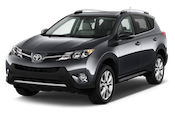
Cheapest Quote: $939
Driver: 46, Female
From: Newmarket, Ontario
Driving: 2023 Toyota RAV4
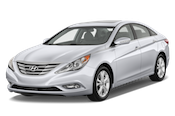
Cheapest Quote: $561
Driver: 50, Male
From: Toronto, Ontario
Driving: 2002 Hyundai Sonata
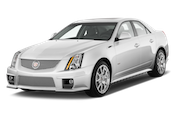
Cheapest Quote: $680
Driver: 45, Male
From: Mississauga, Ontario
Driving: 2006 Cadillac CTS
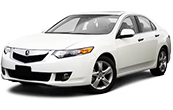
Cheapest Quote: $733
Driver: 41, Male
From: Calgary, Alberta
Driving: 2009 Acura TSX
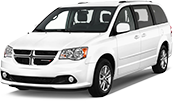
Cheapest Quote: $753
Driver: 38, Female
From: Edmonton, Alberta
Driving: Dodge Grand Caravan
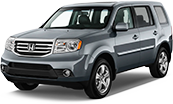
Cheapest Quote: $765
Driver: 43, Female
From: Airdrie, Alberta
Driving: 2015 Honda Pilot
*Based on the difference between the average lowest auto insurance premium and overall average auto insurance premium from our site in 2022.


